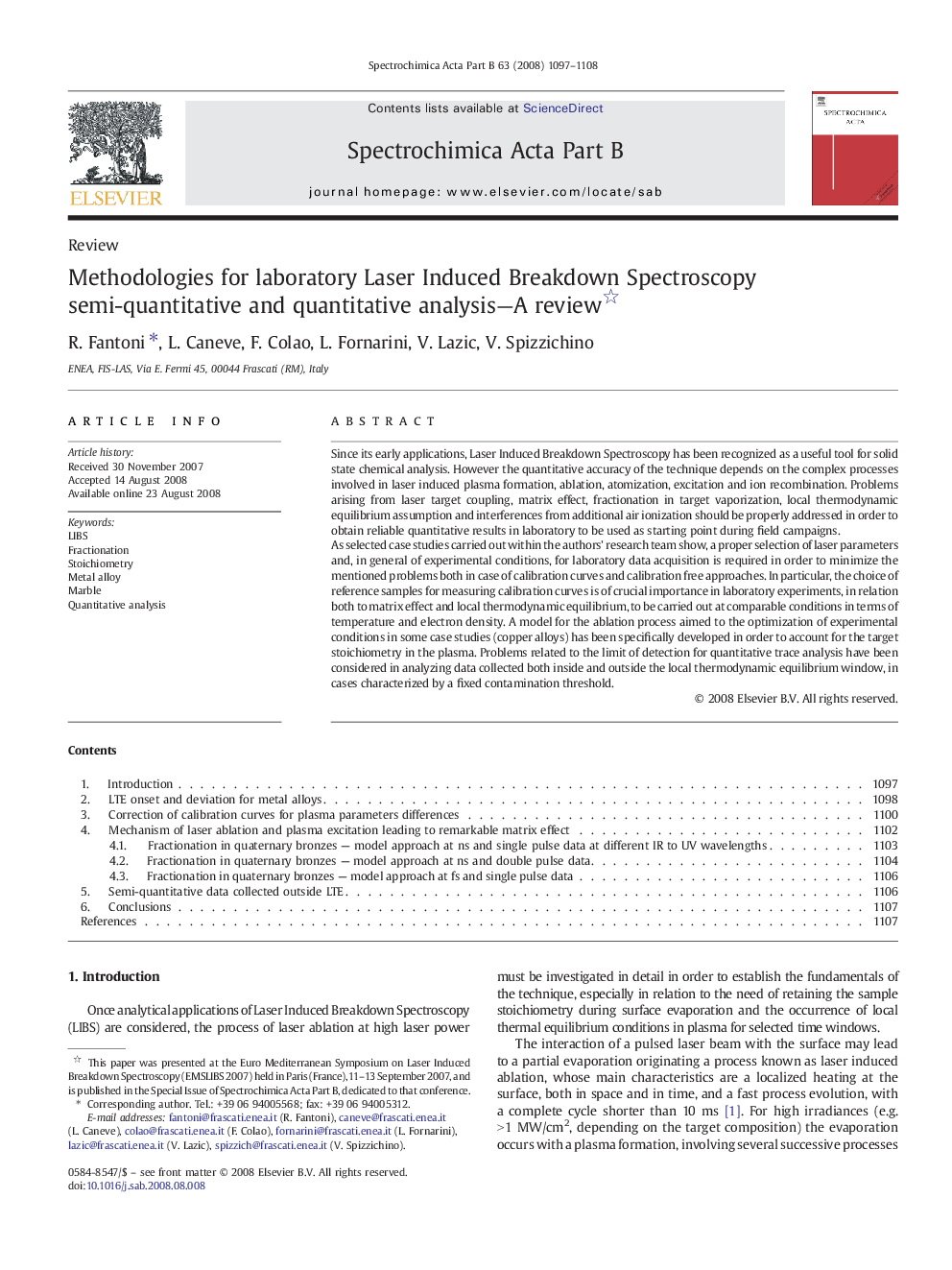| Article ID | Journal | Published Year | Pages | File Type |
|---|---|---|---|---|
| 1241247 | Spectrochimica Acta Part B: Atomic Spectroscopy | 2008 | 12 Pages |
Since its early applications, Laser Induced Breakdown Spectroscopy has been recognized as a useful tool for solid state chemical analysis. However the quantitative accuracy of the technique depends on the complex processes involved in laser induced plasma formation, ablation, atomization, excitation and ion recombination. Problems arising from laser target coupling, matrix effect, fractionation in target vaporization, local thermodynamic equilibrium assumption and interferences from additional air ionization should be properly addressed in order to obtain reliable quantitative results in laboratory to be used as starting point during field campaigns.As selected case studies carried out within the authors' research team show, a proper selection of laser parameters and, in general of experimental conditions, for laboratory data acquisition is required in order to minimize the mentioned problems both in case of calibration curves and calibration free approaches. In particular, the choice of reference samples for measuring calibration curves is of crucial importance in laboratory experiments, in relation both to matrix effect and local thermodynamic equilibrium, to be carried out at comparable conditions in terms of temperature and electron density. A model for the ablation process aimed to the optimization of experimental conditions in some case studies (copper alloys) has been specifically developed in order to account for the target stoichiometry in the plasma. Problems related to the limit of detection for quantitative trace analysis have been considered in analyzing data collected both inside and outside the local thermodynamic equilibrium window, in cases characterized by a fixed contamination threshold.
